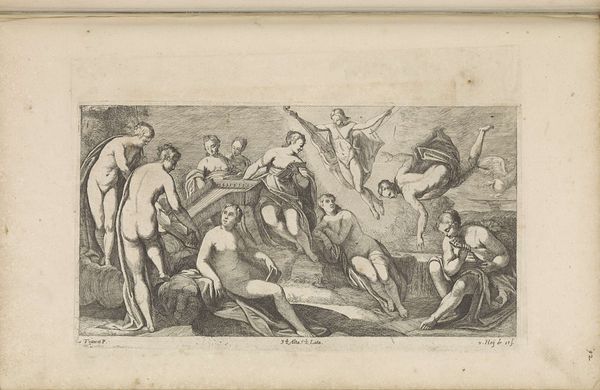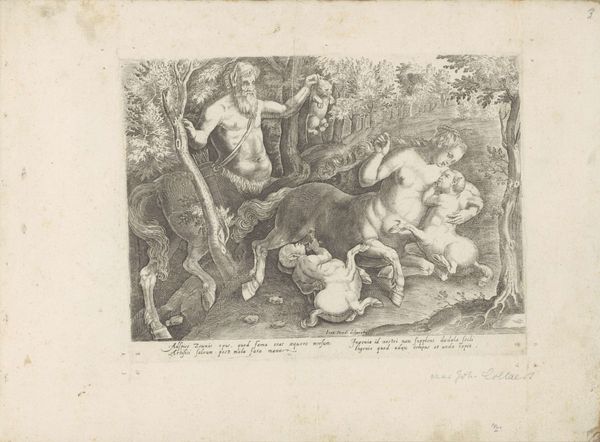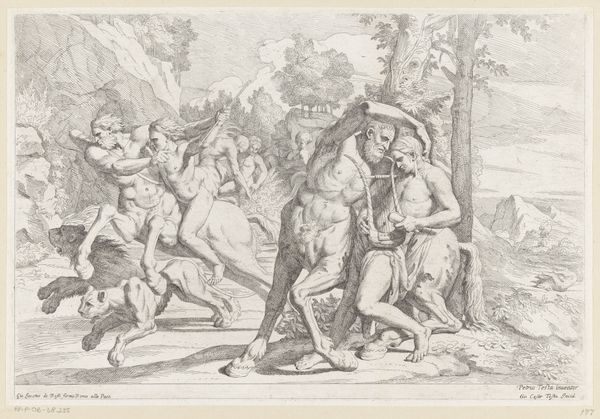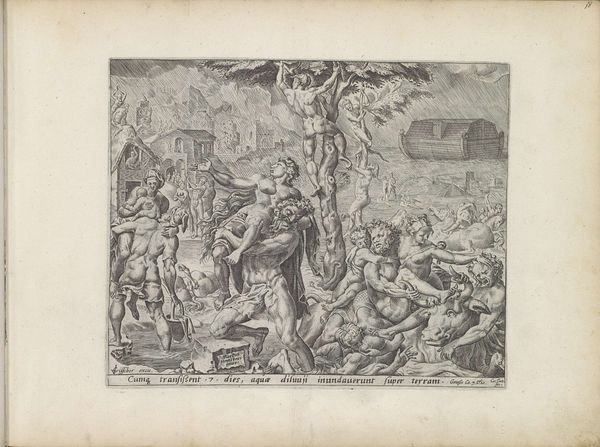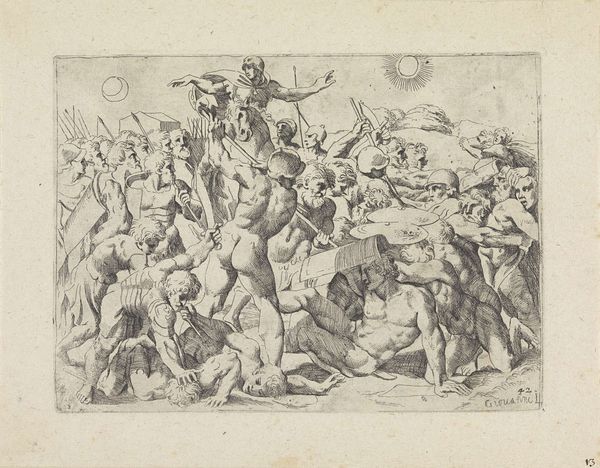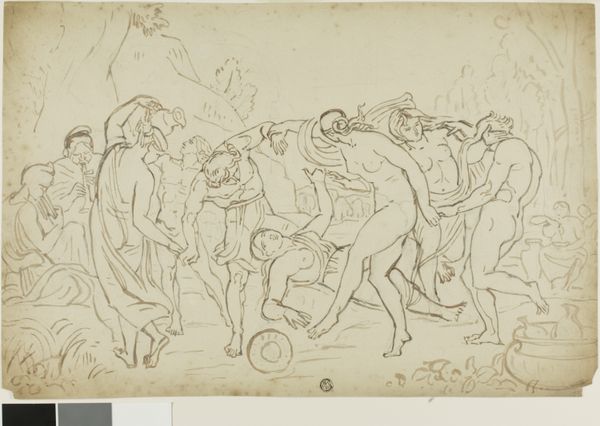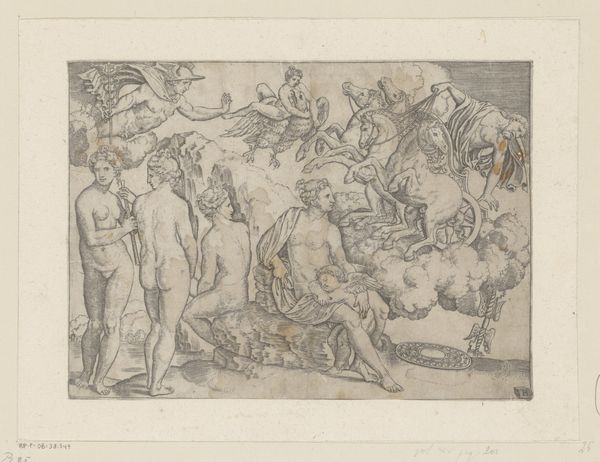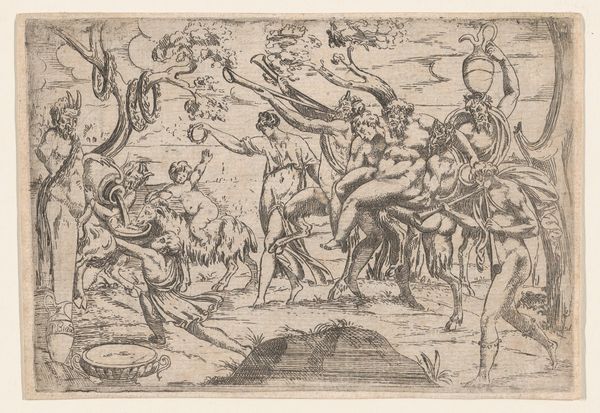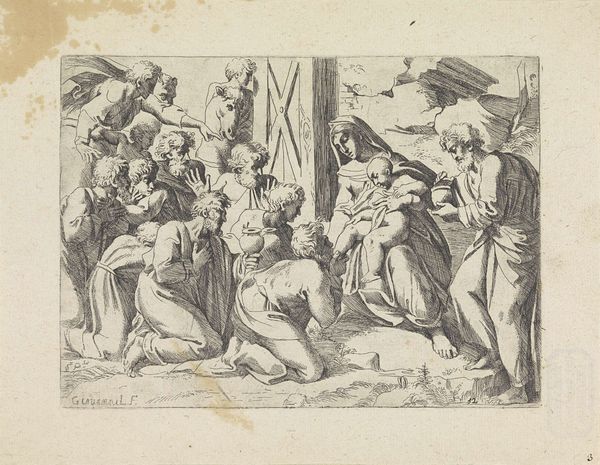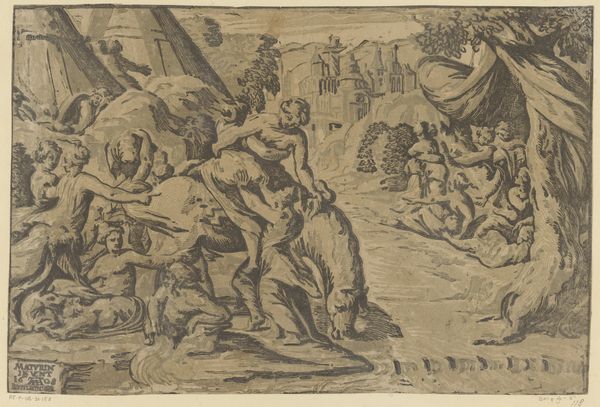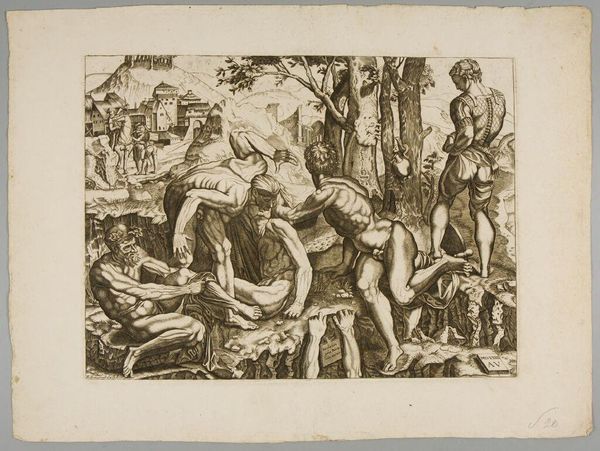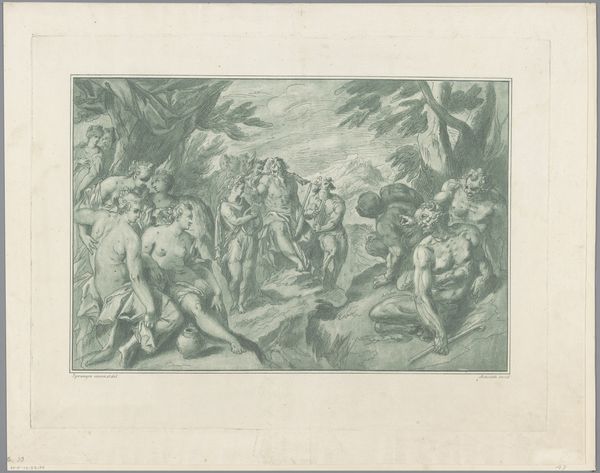
drawing, print, engraving
#
drawing
#
toned paper
#
light pencil work
#
quirky sketch
#
baroque
# print
#
pencil sketch
#
sketch book
#
figuration
#
personal sketchbook
#
sketchwork
#
ink drawing experimentation
#
sketchbook drawing
#
history-painting
#
sketchbook art
#
engraving
Dimensions: height 130 mm, width 179 mm
Copyright: Rijks Museum: Open Domain
Editor: Here we have Giovanni Lanfranco’s “Jakob keert terug naar zijn vader Isaak,” made in 1607. It’s an engraving and looks like a scene packed with people on horses, donkeys, even some walking. There’s a whole narrative being told, but it's almost... frantic? How do you interpret this work? Curator: Looking at Lanfranco's print through a historical lens, it's important to remember the sociopolitical climate of the early 17th century. Religious narratives were incredibly powerful, often serving as vehicles for conveying moral lessons and reinforcing social hierarchies. Do you notice anything specific about how the figures are depicted, particularly Isaac? Editor: Well, Isaac seems central, on horseback, maybe? But he is just part of the entire procession. Curator: Precisely. The presentation of the family is not centered, instead it focuses on the journey. Reflecting on this depiction, do you think Lanfranco is subtly commenting on familial authority or maybe suggesting a shift in the perception of familial power within the larger social structure? What role do you see prints like these playing in early modern European society? Editor: I never thought of it that way. I always just saw the surface-level religious story, but framing it within its time and place… it seems to elevate history, power, and the public all at once. Prints like these allowed narratives to be shared on a mass level, solidifying and propagating religious ideology and familial power structures for those that engaged with them. Curator: Exactly. Lanfranco's work reveals the intertwined relationships between art, power, and the viewing public. Considering these elements is key when analyzing art historically. Editor: It is. Looking at this print, it's now clear to me how social and historical elements deeply influenced art creation and how the meaning is understood today. Curator: Indeed, it makes it richer, doesn't it?
Comments
No comments
Be the first to comment and join the conversation on the ultimate creative platform.
